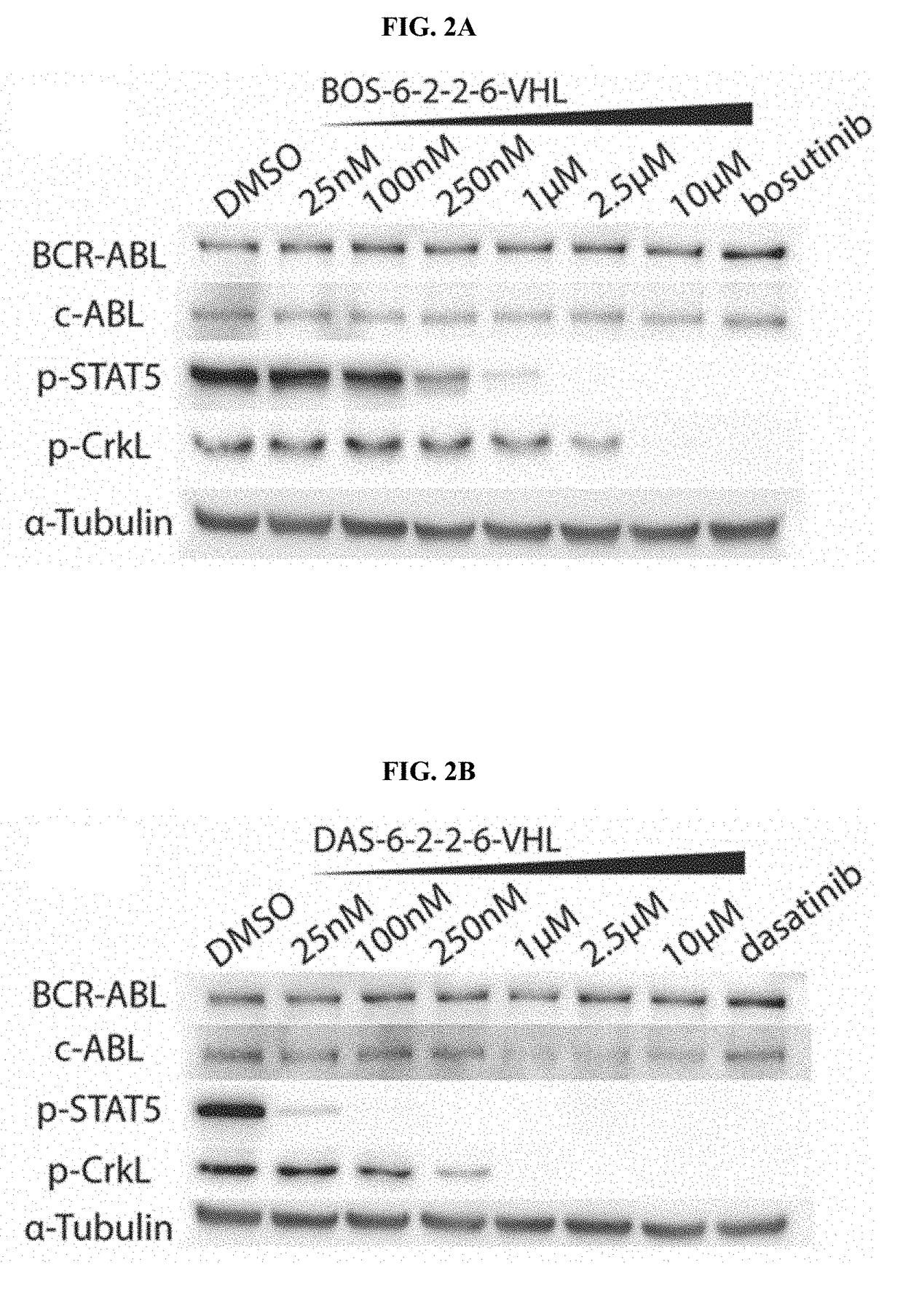Proteolysis targeting chimera compounds and methods of preparing and using same
a technology of chimera compounds and proteolysis, which is applied in the field of inhibitor-based drugs, can solve the problems of pharmacokinetic properties and limited clinical application of these approaches, and achieve the effects of reducing the number of side effects, reducing the risk of side effects, and improving the safety of us
- Summary
- Abstract
- Description
- Claims
- Application Information
AI Technical Summary
Benefits of technology
Problems solved by technology
Method used
Image
Examples
examples
[0381]The invention is now described with reference to the following Examples. These Examples are provided for the purpose of illustration only and the invention should in no way be construed as being limited to these Examples, but rather should be construed to encompass any and all variations which become evident as a result of the teaching provided herein.
Methods and Materials
1. Biology
Cell Lines and Materials
[0382]K562 cells were obtained from ATCC and were grown at 37° C., 5% CO2 in Iscove's Modified Dulbecco's Media (IMDM) supplemented with 10% FBS, 100 U / mL penicillin and 100 μg / mL streptomycin. HEK293 and SK-BR-3 cells were obtained from ATCC and were grown at 37° C., 5% CO2 in Dulbecco's Modified Eagle's Media (DMEM) supplemented with 10% FBS, 100 U / mL penicillin and 100 μg / mL streptomycin. Phospho-STAT5 Y694 (#4322) and phospho-CrkL Y207 (#3181) antibodies were obtained from Cell Signaling Technologies. c-ABL (24-11) antibody was obtained from Santa Cruz Biotechnologies. α-...
example
[0489]As demonstrated herein, small molecule PROTACs were found to induce the degradation of BCR-ABL kinase. By varying the target binding ligand (warhead) and the E3 ligase being recruited, BCR-ABL PROTACs can enter cells and bind their target, achieving degradation of the protein.
[0490]To produce BCR-ABL degrader compounds, BCR-ABL TKIs (imatinib, bosutinib and dasatinib) that bind the c-ABL kinase domain were conjugated to a Von Hippel Lindau (VHL) E3 ubiquitin ligase ligand or to the thalidomide derivative, pomalidomide, to recruit Cereblon (CRBN) E3 ligase. Without wishing to be limited by any theory, the resulting bifunctional compounds may bind BCR-ABL via the TKI moiety, and bind to VHL or CRBN via its recruiting ligand. Using the crystal structures of the c-ABL kinase domain in complex with the TKIs (imatinib, dasatinib and bosutinib), positions to attach the linkers to the respective TKIs were selected such that critical binding interactions were not disrupted (FIG. 1B). F...
PUM
 Login to View More
Login to View More Abstract
Description
Claims
Application Information
 Login to View More
Login to View More - R&D
- Intellectual Property
- Life Sciences
- Materials
- Tech Scout
- Unparalleled Data Quality
- Higher Quality Content
- 60% Fewer Hallucinations
Browse by: Latest US Patents, China's latest patents, Technical Efficacy Thesaurus, Application Domain, Technology Topic, Popular Technical Reports.
© 2025 PatSnap. All rights reserved.Legal|Privacy policy|Modern Slavery Act Transparency Statement|Sitemap|About US| Contact US: help@patsnap.com



